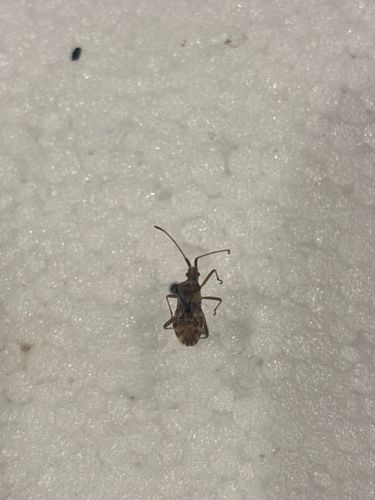Western Conifer Seed Bug
Scientific Name: Leptoglossus occidentalis
Order & Family: Hemiptera, Coreidae
Size: 15-20 mm (0.6-0.8 inches)

Natural Habitat
Coniferous forests, often found indoors in colder months seeking shelter. Native to western North America, but now an invasive species in much of the northern hemisphere.
Diet & Feeding
Primarily feeds on developing seeds and cones of conifers (pines, firs, spruces, hemlocks), extracting sap with its piercing-sucking mouthparts. They can also feed on sap from stems and needles.
Behavior Patterns
Adults overwinter in sheltered locations, often entering homes and other structures in the fall. They are generally slow-moving, but can fly. When disturbed, they may emit a foul-smelling, distasteful liquid as a defense mechanism, hence the 'stink bug' association.
Risks & Benefits
Potential risks include being a nuisance pest when they aggregate indoors in large numbers. While they don't bite or sting humans, their presence can be alarming, and their defensive odor is unpleasant. They can cause minor damage to conifer seeds, but are generally not considered a major agricultural pest. They have no significant benefits to humans beyond being part of the natural ecosystem.
Identified on: 9/19/2025